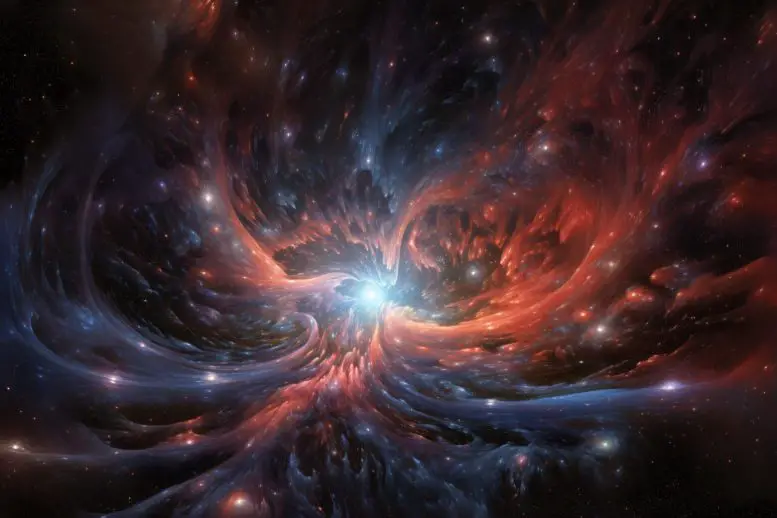An international group of astronomers has discovered giant magnetic structures that extend several thousand light-years across our Galaxy. The new discovery will help scientists better understand the evolutionary processes of spiral galaxies.
Magnetic halos are large regions around galaxies that are saturated with magnetic fields and cosmic rays. They play an important role in understanding how galaxies evolve over time, including the emission of matter and energy and the impact of star formation activity on the surrounding space.
But studying the magnetic halo of the Milky Way is a difficult task. The fact is, we are inside the Galaxy and local structures such as spiral arms create noise, making it difficult to detect large-scale structures.
In 2020, astronomers discovered giant X-ray structures called eROSITA bubbles, with the help of the eROSITA orbital observatory. These bubbles extend above and below the plane of the Galaxy and are likely associated with powerful energetic events in the Milky Way’s past.
Now the results of the study have been published in the journal Nature Astronomyshowed that giant magnetic structures exist in regions overlapping the eROSITA bubbles. It was possible to detect them on the basis of polarized radio radiation and its gamma-ray analogues, indicating the presence of relativistic electrons – particles moving at a speed close to the speed of light.
The authors of the scientific study noted that when interacting with magnetic fields, such electrons emit synchrotron radiation, which is recorded in the radio and gamma ranges. Thus, a research group from the National Institute of Astrophysics (Italy) with the participation of Marijke Haverkorn (Marijke Haverkornfrom Radbaud University (Netherlands) proposed that these magnetic structures were formed as a result of strong galactic emissions (outgoing flows of matter and energy).
The “engine” of emissions is likely to be active regions of star formation located at a distance of about 9800 – 16300 light-years from the center of the Galaxy. Let us recall that intense star formation is accompanied by supernova explosions and other energetic events that can affect the structure of the magnetic field.
The results of the new study are important for understanding the evolution of our Galaxy, as well as the evolution of spiral galaxies in general. Many spiral galaxies have X-shaped magnetic structures in their halos, but their formation mechanism has remained a mystery until now. The new data suggest that such structures may arise as a result of galactic emissions associated with active star formation.
“The study opens new horizons in our understanding of the galactic halo and expands our knowledge of the complex and dynamic star formation ecosystem in the Milky Way,” the astronomers said.













